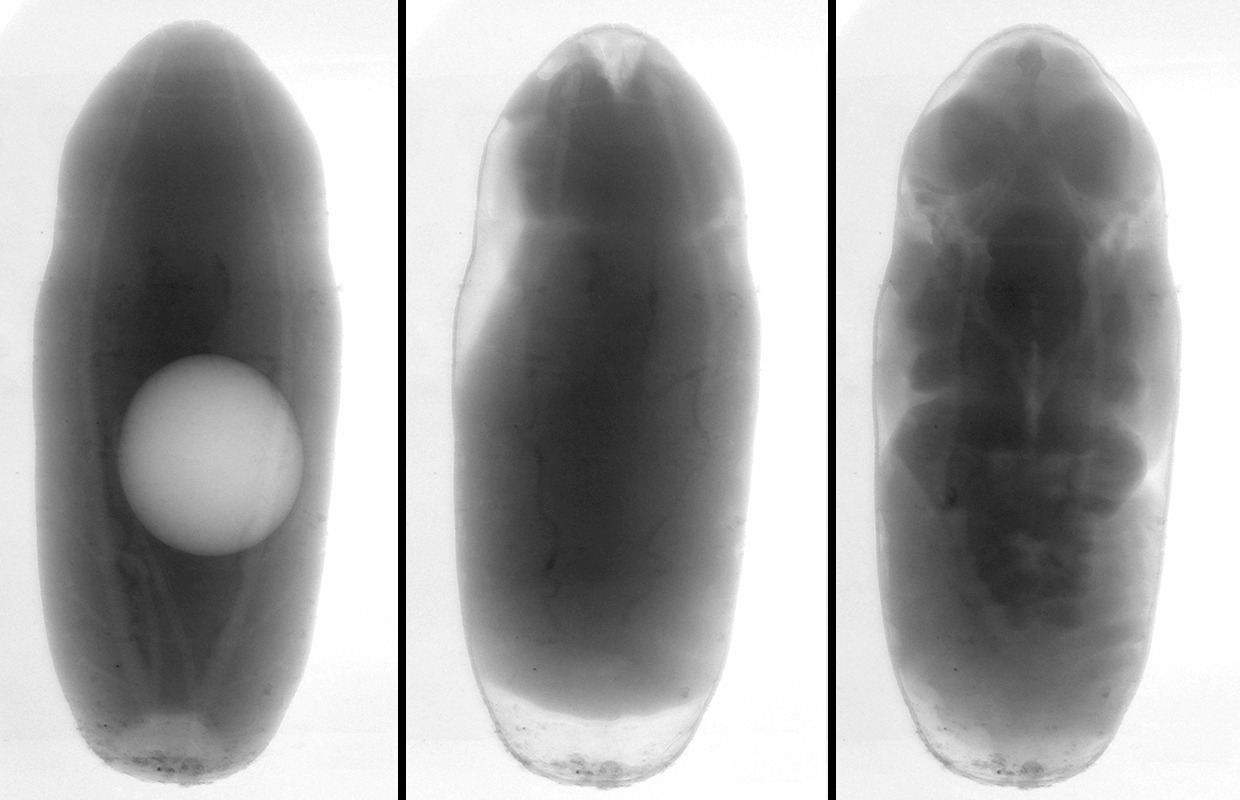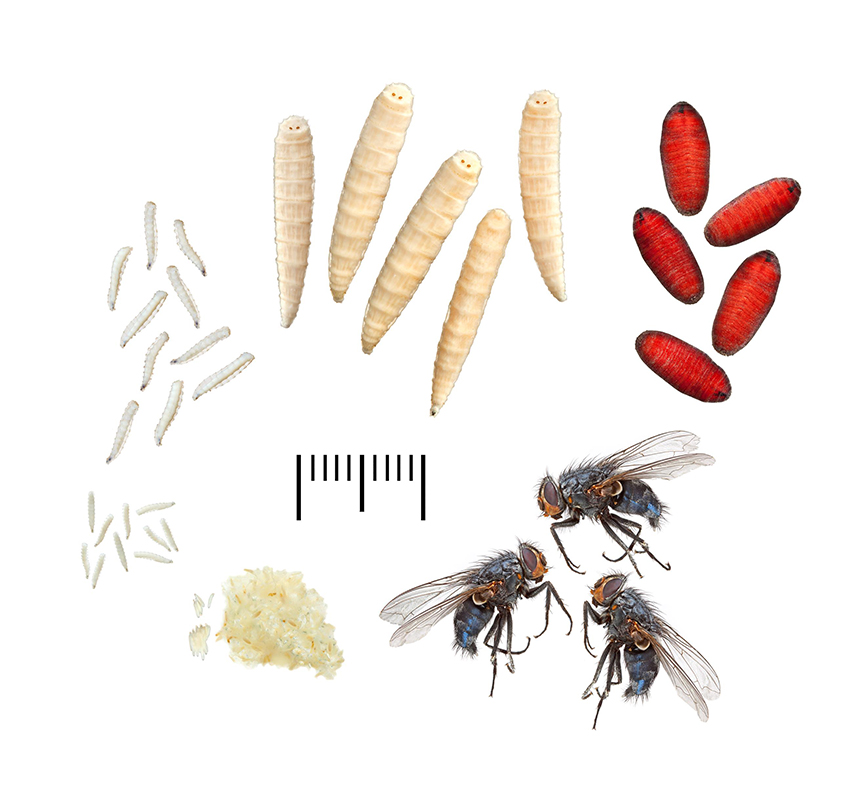X-Ray Video Captures Maggot Metamorphosis

For the first time, scientists have captured time-lapse video of a maggot transforming into an adult fly.
Researchers used X-ray imaging to peer at the developing insect as it nestled inside an opaque shell called a puparium. They watched as the larval structures melted away and mature body parts sprouted in their place.
The incredible footage offers an unprecedented glimpse of the larva's metamorphosis, showing the process in greater detail than was previously known. The video provides fresh insights into the stages that mark the dramatic physical transformation between larva and adult fly, the scientists said. [Maggots Metamorphosing Into Blowflies: X-Ray Time-Lapse Video]
A taste for decay
The bluebottle blowfly (Calliphora vicina) is known for its metallic blue color and its attraction to decomposing flesh. Females lay their eggs in decaying remains, and larva occupy their grisly homes through three instars, or developmental stages. They then become pupas, retreating into puparia and metamorphosing into their adult forms.
Blowflies are quick to detect the odor of decay and usually arrive and lay their eggs soon after death occurs, prior studies have shown. Because temperature plays an important role in how quickly the maggots and pupas develop, their presence on a human corpse — and their developmental stage — can help experts determine when the person died.
Forensic entomologists — scientists who study the relationship between insect life and decaying corpses to assist in crime-scene investigations — look closely at the flies, maggots and pupas on and near a body. These scientists are "essentially working out how old the oldest specimens feeding on the body (or that fed on the body) are — the ones laid there by the first-arriving adult flies," study co-author Martin J.R. Hall, a research entomologist at the Natural History Museum (NHM) in London, told Live Science in an email.

Blowflies develop from egg to adult after about 18 days. The insects spend more than 50 percent of that time — 10 days — inside a puparium, but it is the least-understood stage of their life cycle, Hall said. Scientists in previous investigations had applied mineral oil to puparium shells and blasted them with light to see the pupa inside, but the image resolution of those methods was poor, he explained.
Sign up for the Live Science daily newsletter now
Get the world’s most fascinating discoveries delivered straight to your inbox.
Transformers — more than meets the eye
In a 2012 study, Hall and his colleagues peered inside puparia using CT scans, a method that worked well on preserved and stained specimens but couldn't be applied to living animals. For the new study, the researchers took a different approach, using low-energy X-rays that captured images at 1- to 2-minute intervals, revealing developmental changes happening in the living pupa.
The scientists saw thatafter about 6 hours inside the puparia, the pupa produced an air bubble that moved around inside the shell to create space as the insect transformed. Larval body structures melted away within the first 24 hours, then special cells began producing adult body parts: head, legs, thorax and wings.
It took only about 1 hour and 15 minutes for the general shape of the adult body to emerge, the scientists said. The rest of the pupation — which lasted about nine days — was spent fine-tuning the development of all the insect's new parts, the researchers said.
"The videos were a wonderful tool to demonstrate the marvel of nature that is metamorphosis," Hall told Live Science.
Future investigations will use a new high-resolution micro-CT system at NHM to capture even more details in the blowfly's developmental changes, Hall said.
"We will especially focus on the brain and how it changes from larva to adult, to accommodate the different sensory inputs, especially from the eyes, which are not found in larvae," he added.
The findings were published online Jan. 24 in the journal Royal Society Open Science.
Original article on Live Science.

Mindy Weisberger is an editor at Scholastic and a former Live Science channel editor and senior writer. She has reported on general science, covering climate change, paleontology, biology and space. Mindy studied film at Columbia University; prior to Live Science she produced, wrote and directed media for the American Museum of Natural History in New York City. Her videos about dinosaurs, astrophysics, biodiversity and evolution appear in museums and science centers worldwide, earning awards such as the CINE Golden Eagle and the Communicator Award of Excellence. Her writing has also appeared in Scientific American, The Washington Post and How It Works Magazine. Her book "Rise of the Zombie Bugs: The Surprising Science of Parasitic Mind Control" will be published in spring 2025 by Johns Hopkins University Press.










